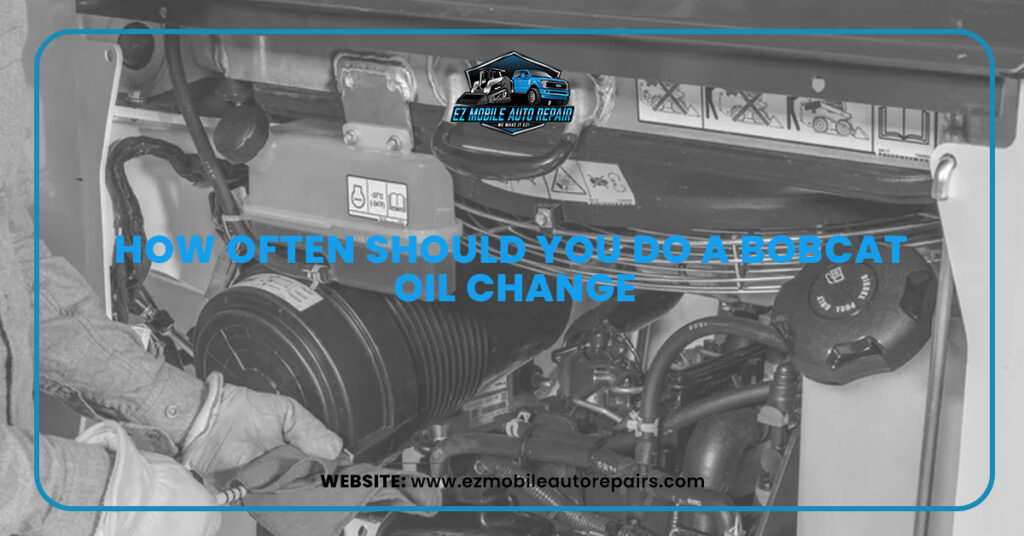
Keeping your Bobcat in top condition depends heavily on regular oil changes. Oil is the lifeblood of your machine’s engine, and neglecting it can lead to poor performance, costly repairs, and reduced equipment lifespan. Whether you own a Bobcat skid steer, excavator, or loader, understanding how often to perform a Bobcat oil change is essential for smooth operation.
Why Bobcat Oil Changes Are Important and What Are the Signs
Engine oil provides three main benefits: lubrication, cooling, and protection. Without fresh oil, engine parts rub against each other, generate excess heat, and wear out much faster. This is why regular oil changes are essential for keeping your Bobcat running efficiently and preventing costly breakdowns during heavy use.
There are a few noticeable signs that indicate your Bobcat oil needs changing. If the oil appears dark, dirty, or unusually thick on the dipstick, it has likely lost its effectiveness. Another warning sign is the oil pressure or maintenance light appearing on the dashboard, which should never be ignored.
You may also notice unusual engine noises such as knocking or rough idling, both of which suggest the oil is no longer providing proper lubrication. In some cases, reduced fuel efficiency and a noticeable drop in power can also point to the need for an oil change.
Step-by-Step Guide to a Bobcat Oil Change
Performing a Bobcat oil change service is straightforward if you follow the correct steps and use the right tools.
Step 1: Preparation
- Park your Bobcat on level ground and turn off the engine
- Let the engine cool down to avoid burns
- Gather supplies: new oil, oil filter, drain pan, funnel, wrenches, gloves, and rags
Step 2: Draining Old Oil
- Locate the oil drain plug under the engine
- Place the drain pan directly beneath it
- Loosen the plug carefully and allow all old oil to drain completely
Step 3: Replacing the Filter
- Unscrew the old oil filter using an oil filter wrench
- Apply a small amount of fresh oil to the gasket of the new filter
- Install the new filter securely, but do not overtighten
Step 4: Adding Fresh Oil
- Reinsert and tighten the drain plug
- Use a funnel to pour in the manufacturer-recommended amount and grade of oil
- Check the dipstick to ensure proper levels
Step 5: Final Checks
- Start the engine and let it run for a few minutes
- Check for leaks around the filter and drain plug
- Turn off the engine and recheck the oil level, topping off if needed
Manufacturer’s Recommended Oil Change Intervals
Bobcat recommends an initial oil change at 50 hours of operation for new machines. After that, oil changes are typically needed every 250 operating hours. However, this interval can vary slightly depending on the specific Bobcat model, so always consult the owner’s manual for accurate guidance.
Factors That Affect Oil Change Frequency
Not every Bobcat will require oil changes at the same interval. Several conditions can shorten oil life and make more frequent maintenance necessary. Heavy workloads, such as constant lifting, digging, or hauling, place extra strain on the engine and cause the oil to break down faster.
Operating in harsh environments like dusty, muddy, or extremely hot and cold conditions also reduces oil performance. Even extended idling can degrade the oil more quickly, since the engine is running without covering many hours of productive work. In addition, poor fuel quality can introduce contaminants that mix with the oil and reduce its effectiveness.
For machines used under these tougher conditions, it is always wise to shorten the oil change schedule to protect the engine from damage.
Common Mistakes to Avoid
Even experienced operators can make errors when changing oil. Some common mistakes include:
- Using the wrong oil type or viscosity
- Forgetting to replace the oil filter
- Overfilling or underfilling the engine with oil
- Failing to keep service records for maintenance scheduling
Avoiding these mistakes ensures your Bobcat runs smoothly and maintains its resale value.
Conclusion
A regular Bobcat oil change is one of the simplest yet most effective ways to keep your machine in excellent condition. Following manufacturer recommendations, paying attention to warning signs, and using proper oil and filters can save you from costly repairs in the long run.
Whether you perform the service yourself or choose a professional Bobcat oil change service, consistency is the key. By staying proactive, you protect your investment and ensure your Bobcat delivers reliable performance on every job.
